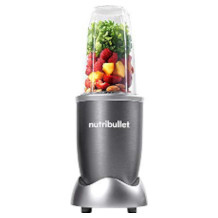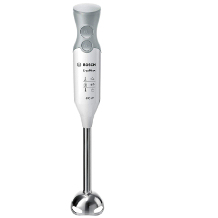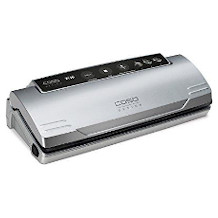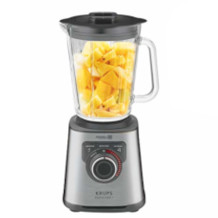Kettle purchasing advice: how to choose the right product
- The most important facts in brief
- A kettle prepares boiling water quickly and efficiently.
- The speed at which a kettle heats its contents depends largely on its power consumption.
- Kettles are not only available in different materials, namely plastic, stainless steel and glass, but also in various designs, from simple classics to retro editions.
- Some models have a temperature regulator that allows the desired temperature to be set at the touch of a button or via a rotary switch.
- Safety first: In addition to the automatic switch-off, kettles should also have a thermo-insulated handle and overheating protection.
Wait and see and drink tea?
Whether to wake up in the morning or to relax in the evening, we don’t want to do without our favourite tea, coffee from the French press and the occasional ready meal. Not so long ago, water was still heated with a so-called whistling kettle. The name comes from its characteristic whistle, which sounds as soon as the water inside has reached boiling point. Today, it is the kettle that provides boiling water in many households as an integral part of the kitchen equipment. And it couldn’t be easier to use: Open the lid, pour in the water, press the switch and the boiling process begins. In no time at all, the water is ready to brew tea, pour instant soup or fill a hot water bottle.
One of the two decisive advantages of a kettle is the time it saves, because with such a device the desired amount of water can be heated much faster than on a cooker top, for example. But the kettle is not only the faster but also the more economical alternative. Since the heat is transferred directly to the water, the energy consumption is minimal. On average, users save up to 50 per cent electricity compared to a hotplate – especially a glass ceramic or electric cooker. Only the induction cooker can compete with a kettle. On the other hand, an induction cooker, including ferromagnetic cooking pots and pans, is much more expensive than a kettle, which is available for less than 20 euros. In addition, a kettle switches off automatically as soon as the water boils.
Construction and mode of operation
A kettle basically consists of two elements: the base and the container including the heating element. In terms of functionality, a distinction is made between kettles with concealed and with exposed heating elements.
The base
The base consists of a bottom plate and a contact foot and is responsible for the power supply. It contains the power cable, which users connect to the socket. Since the power connection is fixed in the base and the water container can be carried around freely, most kettles are referred to as cordless in common parlance. However, this designation is not correct, as a power cable is of course required for use. It is only possible to remove the jug completely from the base for filling and pouring.
If the base is on the edge of the base plate, the water container can only be placed in one position. If, on the other hand, it is in the middle, it is called a 360-degree base or a pirouette base. In this case, the vessel can be placed from any direction. This offers the greatest possible freedom of movement and is equally comfortable for both right-handed and left-handed users.
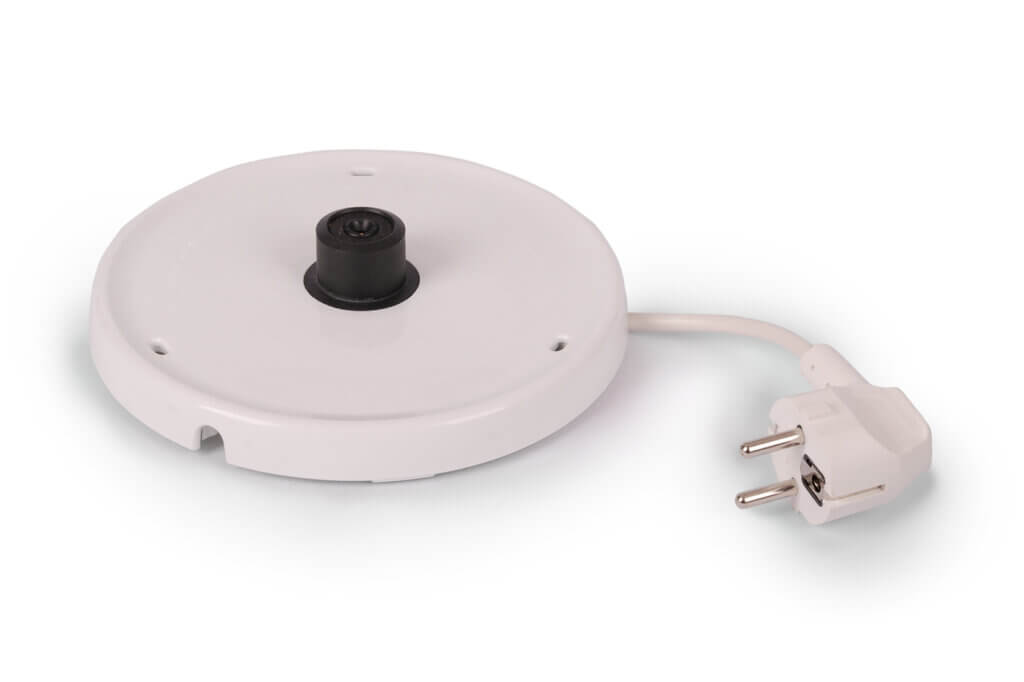
The heating element
When it comes to the heating element that brings the water to the boil, a distinction is made between an exposed and a concealed version. While the base of the kettle now functions as a kind of hotplate itself, a heating coil, comparable to an immersion heater, used to be used for heating. In these older models, the heating element is in direct contact with the water. The disadvantage: as the heating coil is exposed, limescale quickly builds up on it, which results in a costly cleaning process. Usually, no more than a cotton swab fits between the coils. To heat the water, the heating elements must always be covered with water, which is why a minimum filling height must be maintained. This makes boiling smaller amounts of water impossible. In addition, the heating coil technology is a power guzzler that should not be underestimated.
The immersion heater
At first glance, the immersion heater resembles a rod whose handle is connected to a cable. The water is heated with the help of the tubular heating element at the bottom. Although an immersion heater can be used to quickly heat any amount of water in any vessel, users must always hold it in their hand and switch it off manually.
Newer models have a heating source integrated into the base of the container and thus concealed. In this case, the base plate is supplied with power via the base. This means that it heats the water from the bottom of the container. The decisive advantage of this variant is the fact that the heating element itself cannot calcify. The container is therefore much easier to clean. Although limescale stains also occur here, they can be removed easily. In addition, a base plate has a larger contact surface with the water, which heats the water more quickly. The only disadvantage is the noise, which is a little louder than its counterpart with an exposed heating element, similar to a boiling saucepan. In the meantime, however, there are also devices that are quieter because the cooking process is slower.
The different types
Since most modern kettles have a concealed heating element, they now differ mainly in their design and the materials used. The base is made of either plastic or metal. The vessel can also be made of glass or a combination of materials. The type of material primarily makes a difference visually, but also brings different properties.
Plastic kettles: Danger from harmful substances?
The cheapest kettles are made of plastic. They are extremely robust, come in a wide range of colours and score points with a heat-insulating housing that keeps the temperature inside and remains comparatively cool on the outside. All in all, however, the disadvantages outweigh the benefits. For example, the appearance suffers more from sunlight or wear and tear than other variants. Furthermore, the disposal of the material is anything but environmentally friendly. But what worries consumers most is the pollution. After all, small components can dissolve from the surface during cooking. These harmful components include, for example, PAHs (polycyclic aromatic hydrocarbons), phthalates (plasticisers) and BPA (bisphenol A). Cheap plastic in particular not only has a negative impact on the taste of the water, but also on health. It is therefore important to make sure that they are BPA-free.
Stainless steel water boiler: heating water quickly and quietly
Stainless steel is an ideal heat conductor. This property is practical for bringing large quantities of water to the boil quickly. The other side of the coin: appliances without a double-walled housing or heat insulation – both of which are still rare – can get very hot (up to 96 degrees Celsius). This is not only dangerous in terms of possible burn injuries, but also wastes precious energy via the outer wall, which quickly turns the cooker into an energy guzzler. At least the handle, usually a heat-insulated cool-touch handle, should be made in such a way that accidental contact with the surface of the container is impossible.
Since, unlike plastic, it does not release any harmful substances into the water, stainless steel is generally regarded as hygienic, harmless to health and odourless. In addition, the material provides an unadulterated water taste. Another advantage: even if the kettle takes a knock or two, it usually forgives it. This prolongs the service life considerably compared to plastic models.
All that glitters is not stainless steel
Make sure that the container is also made of stainless steel on the inside if you don’t want a plastic water kettle with stainless steel cladding. Whether in the lid or the limescale strainer, there is hardly a model on the market that does completely without plastic components.
But stainless steel water kettles are not only very robust, they are also a feast for the eyes. Be it chrome or aluminium, high-gloss or matt, brushed or lacquered, the high-quality material is available in many different designs and is one of the most elegant solutions. The disadvantage of a glossy surface: fingerprints are easily visible. Matt models require less care. Compared to kettles with a glass body, stainless steel models hide the view inside. This means that any limescale deposits always remain hidden, at least from the outside. Stainless steel is also particularly easy to clean.
Glass water boiler: a clear view of the cooking spectacle
Glass water boilers are currently very popular. The advantage of these appliances: Users can watch the water boiling. Moreover, glass kettles are often equipped with coloured LEDs. So onlookers also get to see a coloured light spectacle. This undoubtedly makes them a highlight in the kitchen. So there are mostly optical motives behind the purchase of a model with a glass body. But glass kettles are not only convincing with their simple yet stylish, almost futuristic design, they also allow users to see the contents at any time, so that they know exactly whether or how much water they need to refill.
Just like the stainless steel versions, glass kettles do not release any harmful substances, such as plasticisers, into the water. This means that the taste of the water is not adulterated, as is sometimes the case with plastic models. Thanks to the non-porous glass structure, germs cannot settle so quickly, which makes boiling water more hygienic. However, glass kettles can also get very hot on the outside.
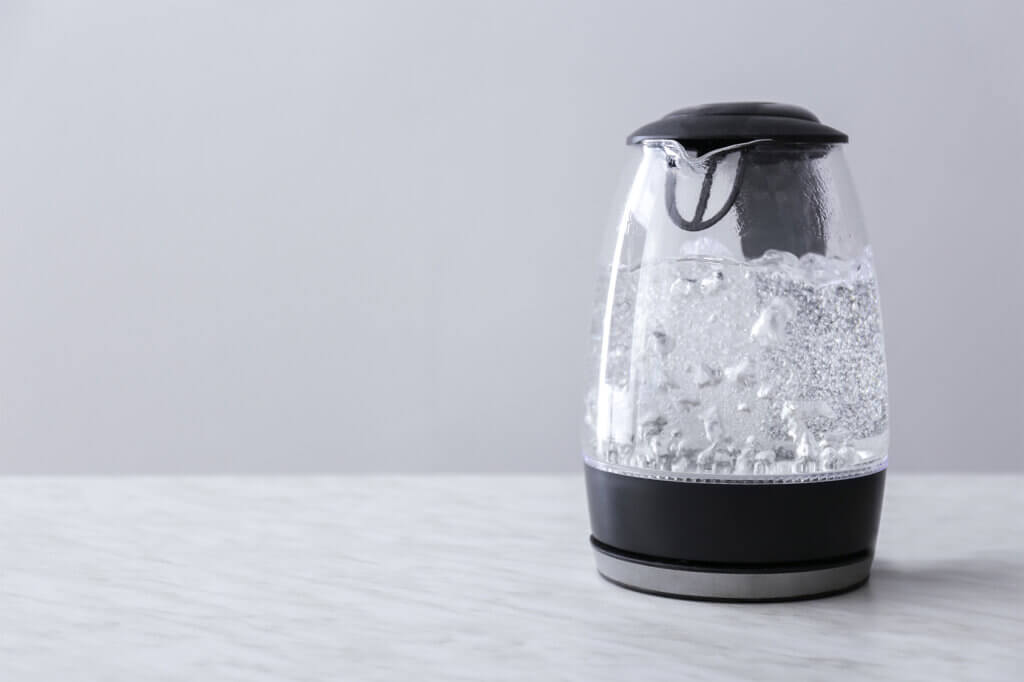
The transparent housing may be an eye-catcher at first, but it quickly spoils the fun for frequent users in particular. Limescale deposits turn the glass milky over time, which no longer looks appealing. Glass kettles must therefore be kept clean with descaling agents, which makes them much more time-consuming to maintain than other models. Moreover, although the special glass used is so heat-resistant and shockproof that it can withstand everyday kitchen use, it is not shatterproof. So the glass jug would rarely survive a fall unscathed.
Retro water kettles: household helpers with nostalgic charm
Kettles with retro or vintage design are practical kitchen helpers and stylish home accessories in one. The appliances in the style of the 50s and 60s bring a nostalgic flair to the kitchen. Be it lacquered stainless steel in bright colours like red, green and blue or something more discreet in creamy white, these kettles are a real eye-catcher on the worktop. The different looks range from a simple, classic robe to extravagant, futuristic designs.
Clear lines and a curved handle made of wood give the kettle a timeless appearance, a cylinder-like housing made of chrome-argan a futuristic look and a container in a characteristic kettle shape a nostalgic charm. In the end, it is not only personal taste that decides on the design, but also how well it matches the kitchen furnishings. Manufacturers often offer other appliances, such as toasters or coffee machines, in the same style, which design purists can buy to match the kettle.
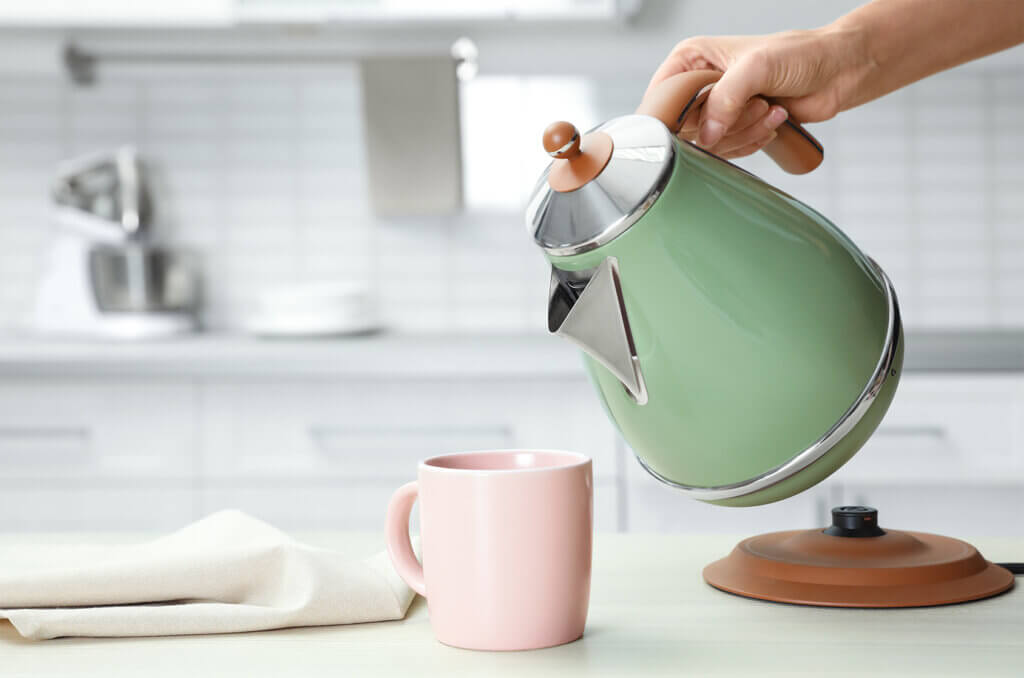
Retro kettles can also keep up with modern designs in terms of functionality. The chic kitchen gadgets are usually made of a largely shock- and scratch-resistant stainless steel, which makes them as stable as they are durable. Their rounded handles are also heat-insulated. The vintage style is completed by a thermometer display that allows users to always keep an eye on the water temperature.
Travel kettles: the practical companions for on the road
If you are often on the road and do not want to do without your morning cup of tea or coffee or instant meals, for example, on a camping holiday, a travel kettle is the best choice. This more compact, lighter version not only fits into any luggage, but is also worth considering for small households or offices. After all, they don’t take up too much space on the kitchen counter or in the cupboard. To save weight, the appliances are usually made of plastic.
Thanks to their handy dimensions, they offer users a variety of applications. The downside is that they can only boil small amounts of water. The capacity of a mini kettle is usually between 0.5 and 1 litre, which is enough for about one to two cups. They operate with correspondingly low wattages. In addition, most devices require a power socket. This means that when camping, users must have a power outlet nearby. Car water boilers are an exception: specially designed for use in vehicles, these models can be plugged into the cigarette lighter.
Special forms: For large quantities, coffee connoisseurs and tea drinkers
Hot water dispensers are a mixture of an instantaneous water heater and a kettle. The stationary devices are reminiscent of a fully automatic coffee machine, have a large volume and thus usually fill several cups. Thanks to the instant heating system, they dispense hot water at the touch of a button. The hot water dispenser has one or two spouts and can handle different programmes as well as portioned water quantities (in various cup sizes).
Especially for coffee connoisseurs, it is worth buying a so-called gooseneck water boiler. The special spout ensures a controlled, precise flow of hot water. This allows users to extract a particularly large amount of flavour. Tea drinkers are also well advised to buy a model that already comes with an integrated strainer. This allows them to brew their favourite tea directly in the kettle.
Kettles for every requirement
Since all kettles are energy-efficient, for many consumers the visual appearance is the decisive factor. However, kettles differ not only in their design, but also in their features. So the design should come second. After all, most people also want a certain performance behind the beautiful packaging. But which model is the right one? To help everyone find the right product for them, we explain below the most important criteria when buying a kettle.
A hot race: Influences on speed
The heat output of modern kettles is between 600 and 3,000 watts, with most devices having an output in the range of 2,000 to 2,400 watts. Kettles with a lower output use less power, but take longer to heat.
Water boils when it reaches the boiling point, in this case 99.97 degrees Celsius. But how long does it take to reach the desired temperature? Basically, the higher the wattage, the shorter the boiling time. The wattage therefore indirectly provides information about the speed of the kettle. Especially for models with a large capacity, the power should be correspondingly high. Most kettles need no more than four minutes to heat a litre of water. Devices with a power of over 2,200 watts bring a litre of water to the boil in about three minutes. So-called flash boilers even need less than three minutes for this amount.
In addition to the power, the amount of water is also important. A small amount of water for a cup of tea can be heated more quickly than a completely filled container. Ideally, power and volume should match. While an XXL kettle with a capacity of more than 1.7 litres requires about 2,400 to 3,000 watts, mini kettles with a volume of less than one litre require 1,500 to 1,800 watts. However, the initial temperature of the water also plays a role in the speed of heating. For example, water heated to 40 degrees boils much faster than water with a temperature of only 20 degrees Celsius. Finally, the materials used also matter: The better the housing is insulated, the faster the water boils.
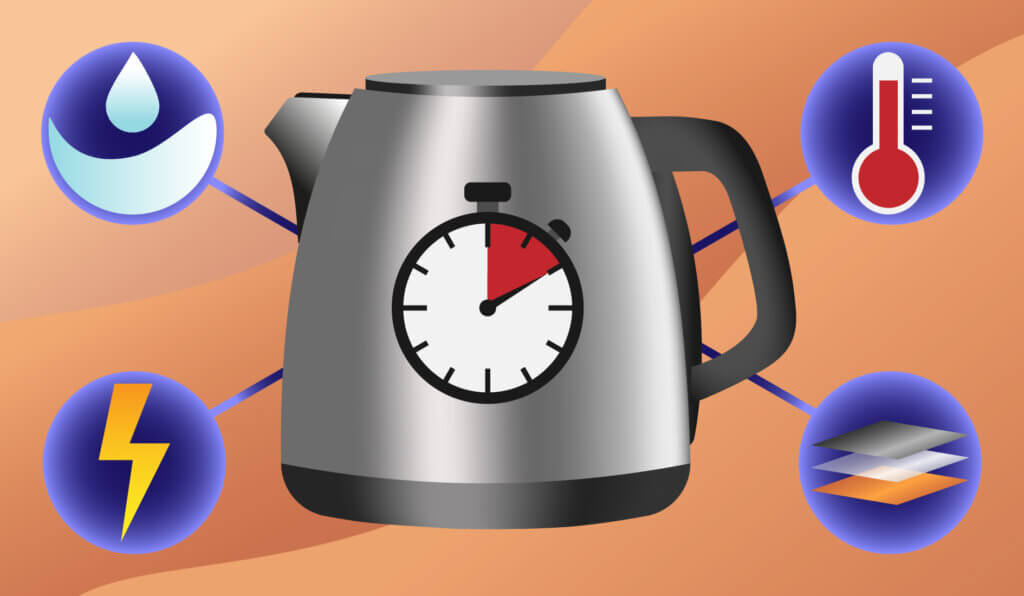
Water march: The right filling capacity
The capacity should be chosen depending on the size of the household or the usual quantities in the household. Usually, the capacity of a kettle is between 1 and 2 litres. Only the small travel kettles hold less than 1 litre. The average filling capacity is 1.7 litres and is suitable for normal to large households. If you only want to enjoy a cup of tea now and then, a small appliance (0.5 to 1 litre) is fine. However, if you regularly want to fill entire pots, you should consider a larger model (1 to 2 litres).
A little energy-saving tip on the side: only boil as much water as you actually need: The less water you heat in the cooker, the lower the energy consumption.
Why do I need a limescale filter in the kettle?
Most kettles come with a removable filter in the form of a strainer insert at the spout. It is used to stop the flaking limescale that might get into the cup. As standard, this is made of plastic, more rarely of stainless steel. The sieve insert should be as fine-meshed as possible to retain all limescale residues. It is sufficient to wash the limescale filter regularly.
Decisive for limescale formation: The degree of hardness
Tap water in Germany has a different degree of hardness, i.e. limescale content, depending on the region. Water with a hardness of more than 9 dH (degrees of German hardness) is called hard water, and water with a hardness of less than 8 dH is called soft water.
What safety mechanisms should the kettle have?
The combination of hot water and electricity is always a source of danger. Modern kettles are equipped with various safety mechanisms to prevent the risk of fire and to allow the appliance to do its job even when unattended. These safety measures include an automatic switch-off and overheating protection. The automatic shut-off causes the power supply to be interrupted as soon as the water has reached the desired temperature. Users know that the boiling process is finished by means of a click sound or signal tone. For this purpose, the kettle is equipped with a bimetal temperature sensor. On the one hand, it prevents too much water from evaporating, and on the other hand, it prevents unnecessary use of energy.
Additional safety is provided by the overheating or dry-boil protection, sometimes also known as automatic steam or boil-stop. In the event of a defect, this mechanism prevents the water from continuing to boil. The appliance switches off automatically if the water level is too low or can no longer be switched on in this state. If the kettle were to boil completely empty, there would be a considerable safety risk. It would overheat, which could lead to a short circuit. If the kettle is made of plastic, the material could melt. In the worst case, a fire could result.
Consumers can tell at first glance that the kettle is working properly by looking at certain seals of approval on the packaging, such as the GS (tested safety) or TÜV seal, which certify safety. In addition, the following minimum requirements should be met:
- The appliance must have a firm stand; in other words, it must not tip over. For this purpose, it usually has a parking device, also known as a supply station.
- Anti-slip feet on the supply station prevent the kettle from slipping off the kitchen worktop.
- Markings for the minimum and maximum permissible fill quantity indicate how much water consumers need to add.
- All areas that users come into contact with must be insulated. This includes the handle of the kettle and, ideally, the container. Many manufacturers therefore install a so-called cool-touch handle, which does not heat up during the boiling process and thus prevents possible burns.
- A safety lid serves as a splash guard. It should open easily and evenly, but never burst open, as this would cause hot water to splash.
- Thanks to the lid lock, the kettle can only be opened by pressing a button. This safety lock prevents the lid from opening by itself when pouring water, which prevents injuries.
- An indicator light or a signal tone lets users know directly whether the kettle is switched on.
- The switch-off function ensures that the kettle switches off automatically as soon as the container is removed from the base.
- A manual switch-off option (usually an on/off button) gives users the option to stop the boiling process prematurely.
Caution, hot steam: When opening the lid, make sure that your hand or face does not come into contact with the steam. After the cooking process is finished, the inside of the container is very hot – and so is the steam that comes out. Therefore, to be on the safe side, wait a few seconds before opening the lid.
Desired temperature at the touch of a button: Why do I need a temperature control?
While simple kettles only have a toggle switch that can be moved to either the “on” or “off” position, higher-priced models are equipped with various temperature settings. This means that they not only heat up to boiling point (about 100 degrees Celsius), but can also be set to common temperature levels or a display between 40 and 100 degrees Celsius.
The water temperature can have a significant influence on the taste result. This additional feature is particularly useful for passionate tea drinkers, because the water should not boil for every tea. It provides a precise result and not only saves waiting time until the water has cooled down to the desired temperature, but also reduces electricity costs. However, for anyone who does not pay attention to every degree, this function is superfluous as it unnecessarily drives up the price.
It’s tea time – the ideal brewing temperature
Depending on the type of tea, the water needs a different temperature to achieve the ideal intensity:
Green tea: 65-80 degrees Celsius
White tea: 80-85 degrees Celsius
Yellow tea: 90 degrees Celsius
Black tea: 96 degrees Celsius
Red tea: 96 degrees Celsius
Which features are useful?
While some additional functions are indispensable for user comfort, others turn out to be merely unnecessary gimmicks. The latter include a WLAN function that allows users to be notified via app on their tablet or smartphone when the desired temperature is reached. A level indicator, a keep-warm function and LED lighting, on the other hand, are useful.
Level indicator
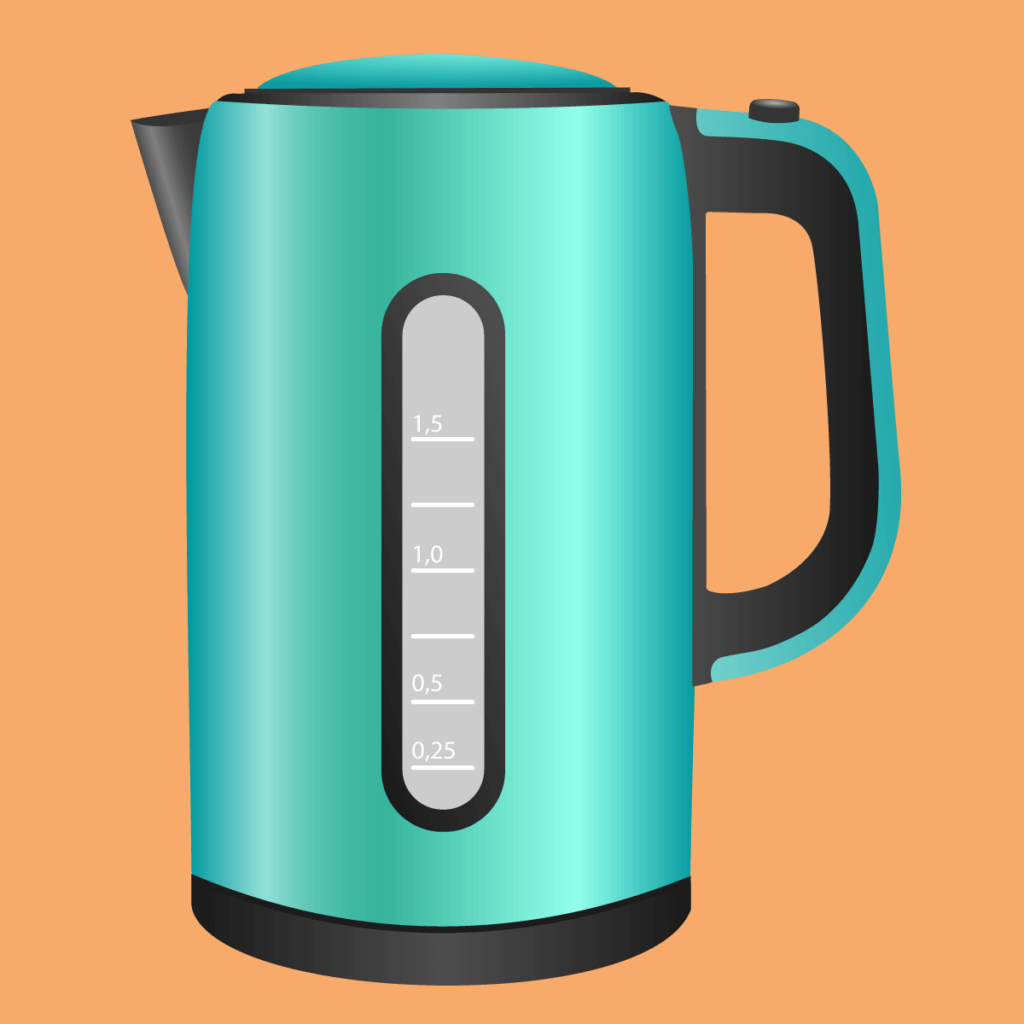
A water level indicator allows users to read off the fill quantity. The scale thus shows how much water is already in the cooker and in this way replaces the measuring cup. To ensure that the scale is easy to read, it should be attached to the side of the housing. A display on both sides ensures equally easy visibility for right- and left-handers. In addition, it should be as detailed as possible; the steps should therefore be a maximum of 0.5 litres. Among other things, cup information is also practical.
Keep-warm function
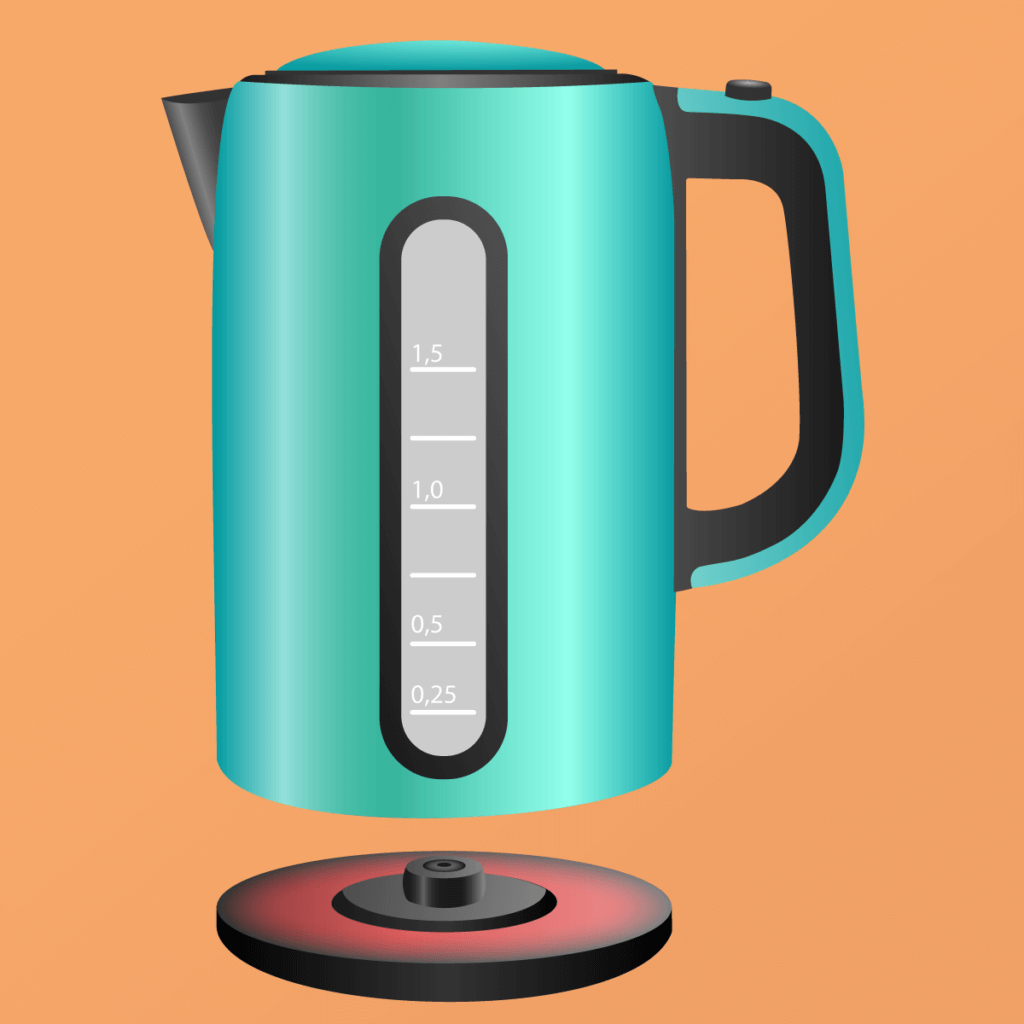
If the kettle is equipped with a hot plate, the water inside stays warm for a longer period of time. This is especially worthwhile for tea lovers who heat the water only once and want to make a new cup of tea every time. By pressing the keep-warm button, the water maintains its current temperature for a period of up to 30 minutes thanks to the heating plate integrated in the base of the water jug. This means that it is not necessary to continue brewing the water immediately or to heat it up again.
LED lighting
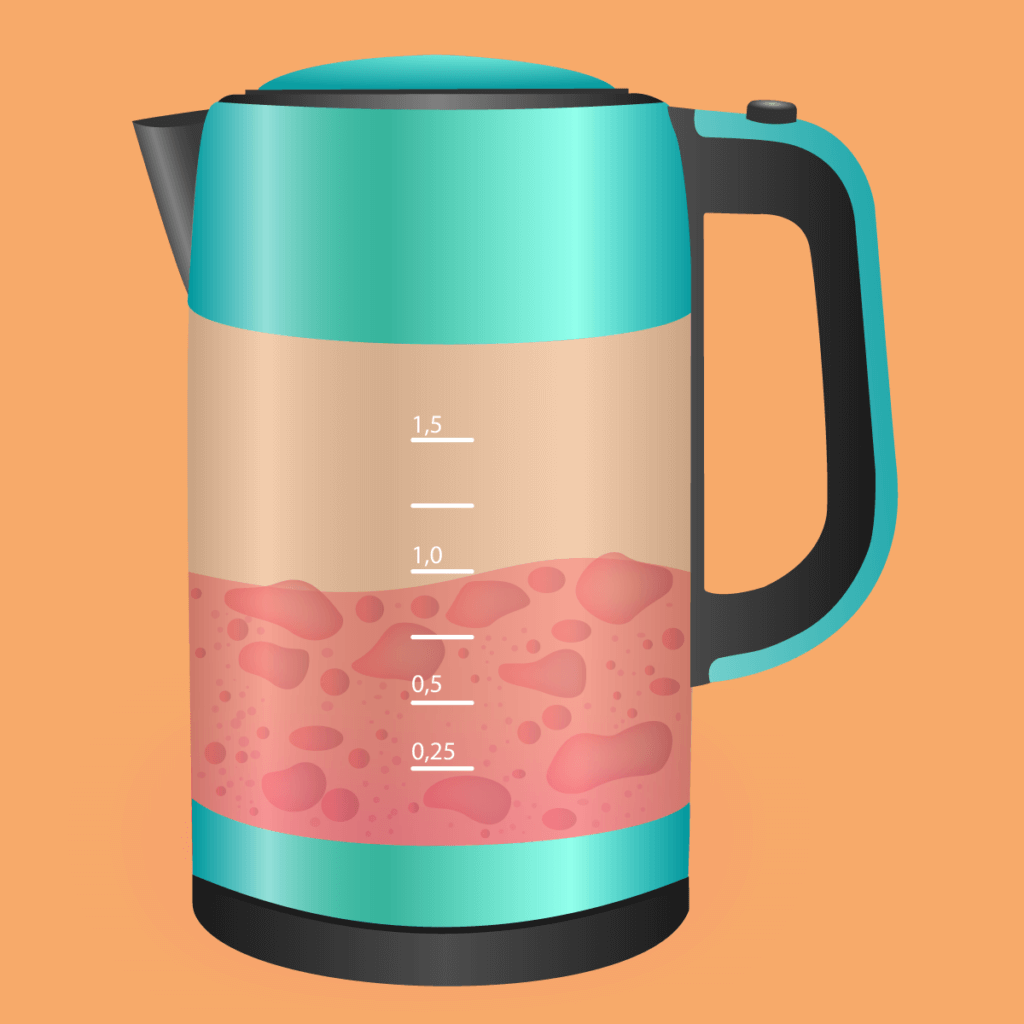
LED lighting integrated into the base of the container is found primarily in glass water boilers. This is activated during the boiling process. This creates a play of light that is an eye-catcher in the kitchen. Some models light up either blue or red depending on the temperature. This colour coding is not only visually very appealing, but it also allows users to estimate from a distance how long they have to wait for the water. In addition, they can still take a look inside the container even in poor lighting conditions.
A question of price: top models from affordable to luxurious
If you are looking for a kettle, you will find a wide variety of brands. The cheapest appliances cost no more than ten euros. However, prospective buyers should not expect miracles with these bargains. After all, manufacturers save on materials, size and performance. With a higher purchase price, the performance usually increases, but so does the capacity and the scope of additional features.
However, good kettles do not necessarily have to be expensive. Devices starting at 20 euros already have all the standard features that a technically mature kettle should have. Mid-range devices for 30 to 50 euros often already have a 360-degree base station and a temperature controller. For stainless steel models with numerous comfort functions, consumers already have to spend between 50 and 100 euros. Particularly high-quality models with a distinctive design are even in the three-digit range.
How often should the kettle be descaled?
Modern kettles with a concealed heating element do not require much maintenance. Cleaning the appliance is primarily a matter of descaling. After all, limescale residues are the kettle’s greatest enemy. They impair its effectiveness and, in the worst case, can lead to a defect in the appliance. If you decalcify your kettle regularly, you will use up to 30 percent less energy. A kettle covered with limescale needs more energy to heat the water. However, how often you need to descale depends on the hardness of the water. At the latest when limescale is visible on the bottom of the kettle, the next cleaning is due. It is usually sufficient to descale the appliance once a month.
The best solution for descaling is a commercially available limescale remover based on citric acid or vinegar. This is available as powder, tablets, granules or in liquid form. The advantage of descaling tablets is that they are already pre-portioned. Then – depending on what the instructions say – they usually only need to be boiled and rinsed again with clear water after the boiling process is finished.
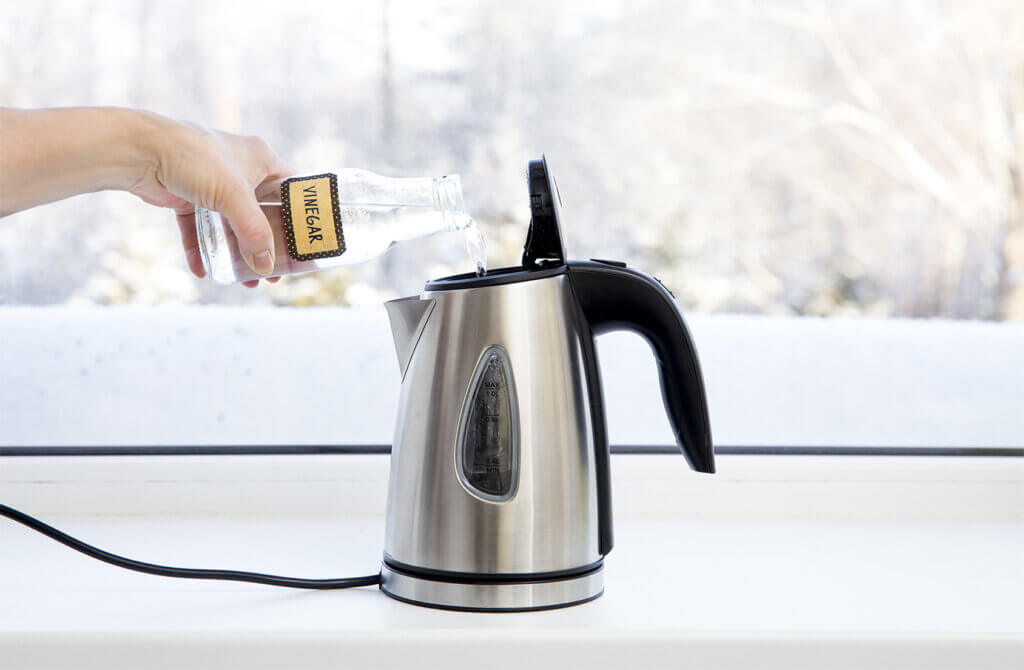
But one or the other home remedy also serves its purpose. If you prefer natural, you can use half a lemon, for example. Users simply rub this over the calcified area. An alternative is a mixture of citric acid and water, which you leave to soak for about three to four hours without boiling it.
Vinegar is the most effective home remedy, but it smells extremely unpleasant. If this does not bother you, proceed as follows:
- Fill the container with vinegar and water in a 1:1 ratio so that the bottom is completely covered.
- Leave this mixture to soak for about one to two hours.
- Bring the water to a boil.
- Empty the mixture and fill the container with tap water.
- Bring the water to the boil again.
- Empty the water – now the kettle is clean and ready for use again.
Boiling with the kettle – is that possible?
Although most manufacturers point out that the devices are only suitable for heating water, this does not stop everyone from also using the kettle to prepare canned soups, milk or even sausages – especially if the cooker is broken. With a little imagination, the kettle can be transformed into a true all-rounder. From noodles to eggs, many things can be prepared in it. However, the vessel is very difficult to clean afterwards. In addition – at least with plastic kettles – the taste settles in the housing.
Nevertheless, the following recipes can also be prepared in the kettle:
- Rice dishes: Fill the kettle with water and hang the bag, i.e. the rice in the cooking bag, in from above. You can secure the bag with the lid. Add some salt and start the cooking process – repeat until the recommended cooking time has elapsed.
- Bag soup: Put the recommended amount of water in the cooker, switch on the appliance and stir in the powder. Once the soup is boiling, it is important to stir continuously.
- Pasta with tomato sauce: Fill the cooker with salted water and cook the pasta in it for around ten minutes. Then heat the tomato sauce with the residual heat. If this is not enough, turn the kettle on again, but be careful not to burn the sauce.

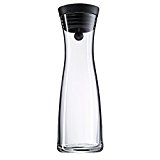
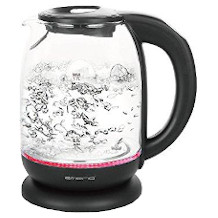
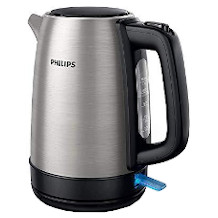
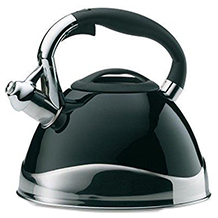
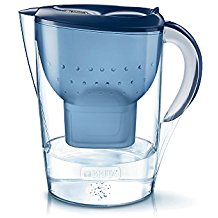
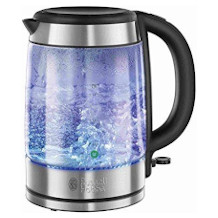
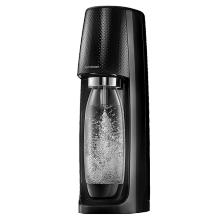
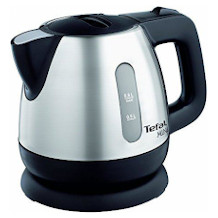

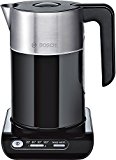
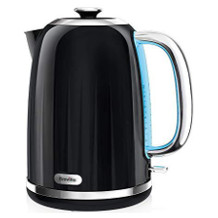
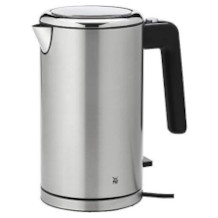
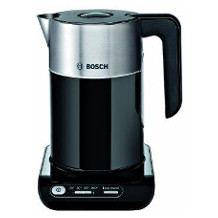
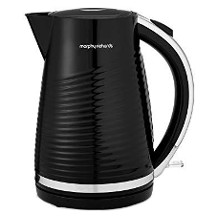
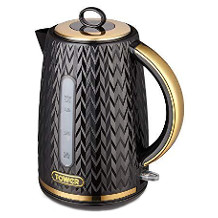
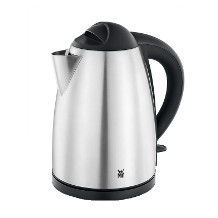
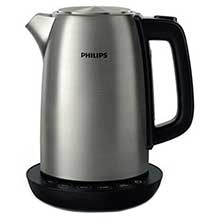
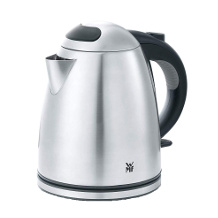
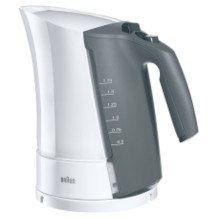
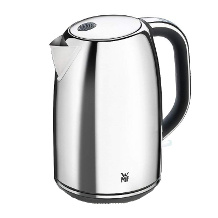
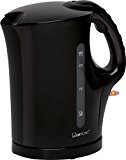
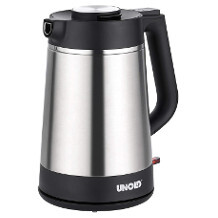
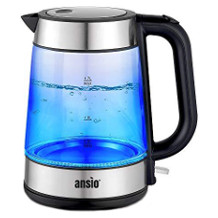
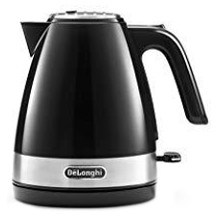
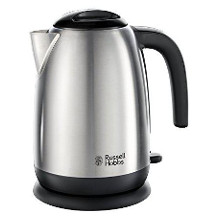
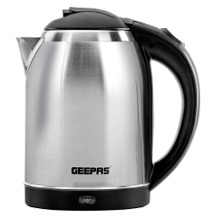

 17,524 reviews
17,524 reviews


